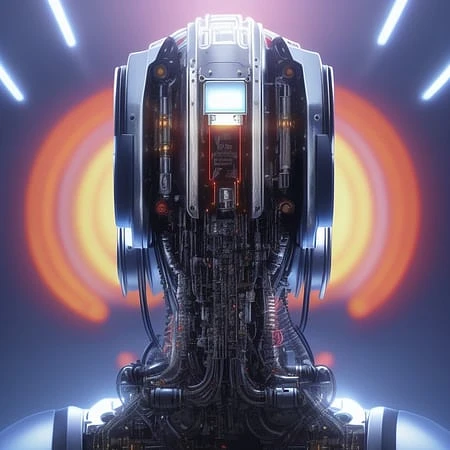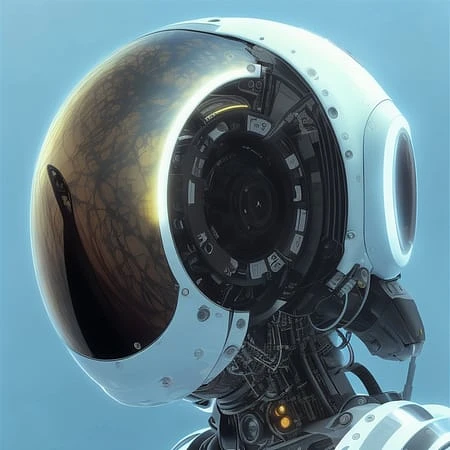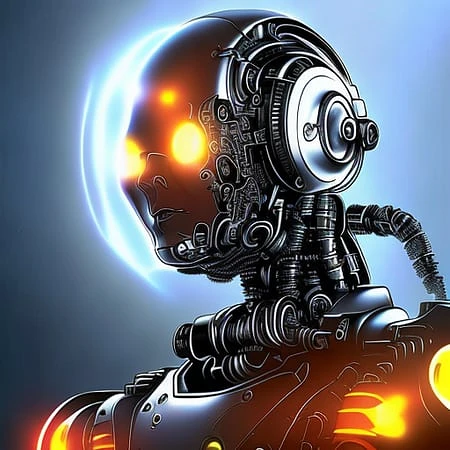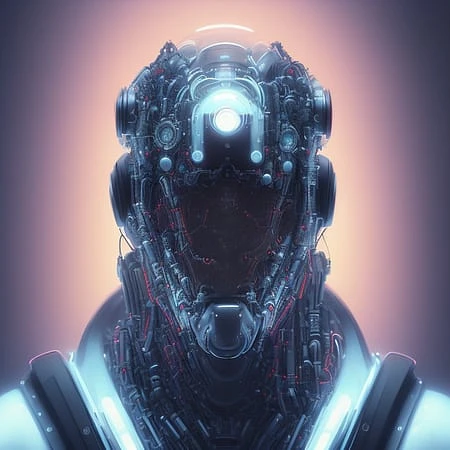Openjourney + Robo-Diffusion Merge
v1It's just a merge of Robo-Diffusion, Openjourney (Midjourney-V4), and SD v1.5.
my prompt:
(nousr robot:1.15), (mdjrny-v4 style:1.2), (centered headshot portrait:1.15) of a (retro cyborg biomechanical man:1.2), (opening reveals gears:1.1), stunning key visual by (Steven Spielberg A.I. Artificial Intelligence \(2001\):1.2);
digital painting, air brush painting, intricate, portrait, 8k, highly professionally detailed, HDR, CGSociety;
negative prompt:
lowres, (bad anatomy, bad hands:1.1), text, error, missing fingers, extra digit, fewer digits, cropped, worst quality, low quality, normal quality, jpeg artifacts, signature, watermark, username, blurry, artist name, b&w, weird colors, (cartoon, 3d, bad art, poorly drawn, close up, blurry:1.5), (disfigured, deformed, extra limbs:1.5)
Steps: 23, Sampler: DPM++ SDE Karras, CFG scale: 6.5, Size: 768x768, Model hash: 833060ae, Denoising strength: 0.5, Eta: 0.67, Clip skip: 2, ENSD: 31337, First pass size: 512x512
~(your milage may vary depending on how you have your SD set up)~
~~(some example images were generated with a hypernetwork trained on my face)~~
What is Openjourney + Robo-Diffusion Merge?
Openjourney + Robo-Diffusion Merge is a highly specialized Image generation AI Model of type Safetensors / Checkpoint AI Model created by AI community user daemonrat. Derived from the powerful Stable Diffusion (SD 1.5) model, Openjourney + Robo-Diffusion Merge has undergone an extensive fine-tuning process, leveraging the power of a dataset consisting of images generated by other AI models or user-contributed data. This fine-tuning process ensures that Openjourney + Robo-Diffusion Merge is capable of generating images that are highly relevant to the specific use-cases it was designed for, such as midjourney v4, robo-diffusion, robots.
With a rating of 0 and over 0 ratings, Openjourney + Robo-Diffusion Merge is a popular choice among users for generating high-quality images from text prompts.
Can I download Openjourney + Robo-Diffusion Merge?
Yes! You can download the latest version of Openjourney + Robo-Diffusion Merge from here.
How to use Openjourney + Robo-Diffusion Merge?
To use Openjourney + Robo-Diffusion Merge, download the model checkpoint file and set up an UI for running Stable Diffusion models (for example, AUTOMATIC1111). Then, provide the model with a detailed text prompt to generate an image. Experiment with different prompts and settings to achieve the desired results. If this sounds a bit complicated, check out our initial guide to Stable Diffusion – it might be of help. And if you really want to dive deep into AI image generation and understand how set up AUTOMATIC1111 to use Safetensors / Checkpoint AI Models like Openjourney + Robo-Diffusion Merge, check out our crash course in AI image generation.




